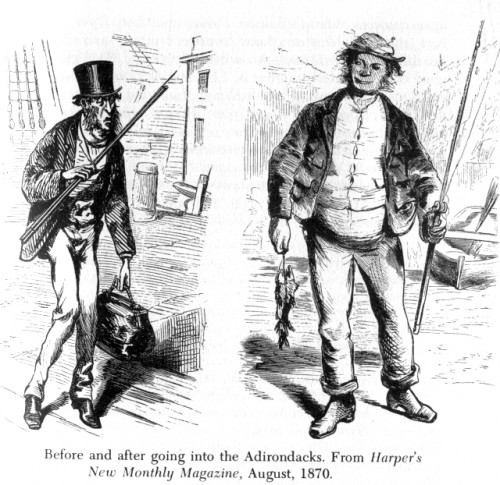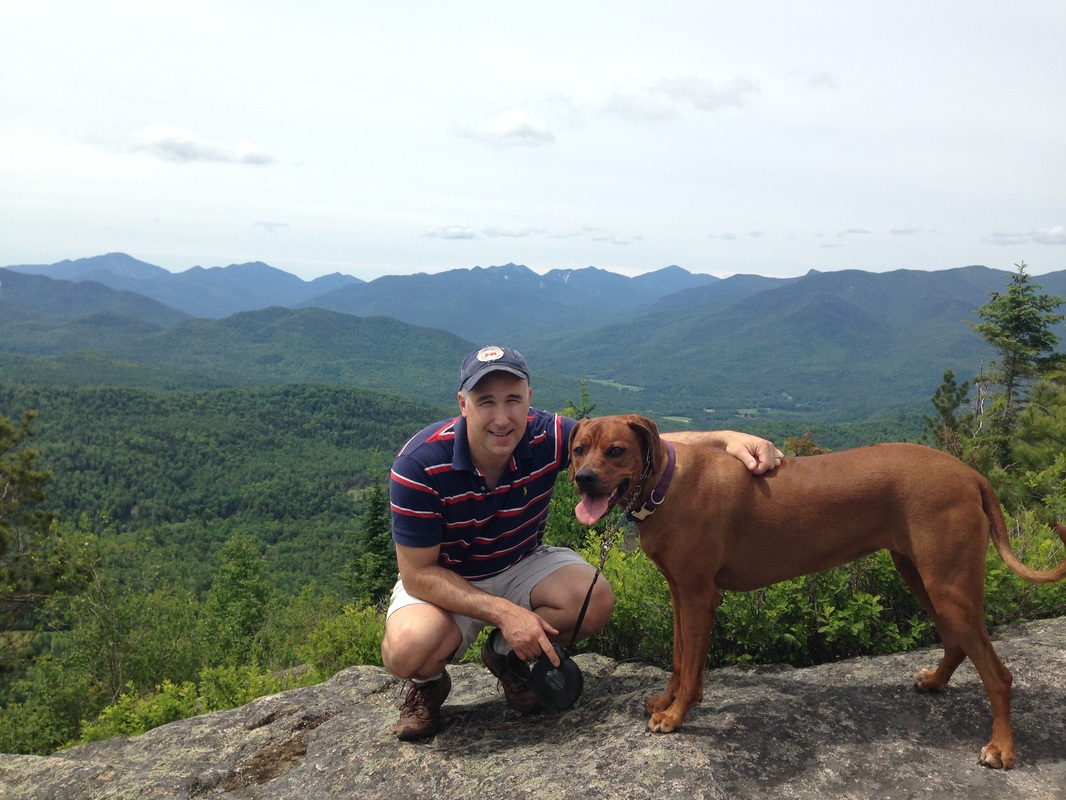 This year marks the 150th anniversary of W.H.H. Murray’s Adventures in the Wilderness, or Camp Life in the Adirondacks. The book was published in the spring of 1869 and launched the Murray Rush into the Adirondacks, giving rise to the monikers “Adirondack Murray” and “Murray’s Fools”. The importance of Murray and his 1869 book has gained increasing attention in the past few years, with articles in The Smithsonian and Time Magazine, as well as inclusion in recent books about camping and outdoor life. Some have gone so far as to label Murray the “Father of Camping” or the Father of the Outdoor Movement in America.”  There are several events planned in 2019 to commemorate this milestone for Adventures in the Wilderness, and many of these involve Murray’s Fools Distilling. On January 30th, the Kelly Adirondack Center of Union College opened an exhibit on Murray and his book. This event included a tasting of our spirits as well as a presentation on Murray by yours truly. The exhibit at the Kelly Adirondack Center continues until mid-May of this year. On April 7, 2019, the Adirondack Experience (formerly known as the Blue Mountain Lake Museum) will hold a special talk on Murray’s book, entitled “Fools Rushed In: W.H.H. Murray’s Adventures in the Wilderness 150 Years Later.” MFDC will be hosting a tasting in the museum’s visitor center that day, and more information about this great event can be found here. Also, on August 15, 2019, I will be presenting a talk on Murray and Adventures in the Wilderness at the Adirondack History Museum in Elizabethtown, New York. That event kicks off with a 6:30 pm reception. Stay tuned for more events. With all this talking, I’m sure going to be thirsty!  MFD Co. Osprey Aquavit MFD Co. Osprey Aquavit I know that 2019 is going to be a very exciting year at Murray’s Fools. How do I know this? I just do. It’s a gut feeling sort of thing. We have momentum and there is no stopping us! There are a couple of tangible signs though. First, 2019 marks the 150th anniversary of the publishing of Adventures in the Wilderness or Camp-Life in the Adirondacks, our namesake’s famous book that initiated tourism in the Adirondacks. There will be a commemorative Murray exhibit at Union College’s Kelly Adirondack Center beginning on January 31st. Adirondack Experience is also hosting a Murray themed event in April. MFDC will be participating in both of these events. Second, our Osprey Aquavit is launching this month. I am very excited and proud to bring this creation of Sarah’s to market! Finally, we will be opening our tasting room in the spring with a new outside venue including a scenic fire-pit area, picnic tables and a band stage featuring live music. We are going to be busy, but it’s going to be a blast!  New Lockers at MFD Co. New Lockers at MFD Co. This past weekend Sarah and I chose our respective lockers (useful for storing our civilian accoutrements when we are working) in the distillery and placed our nameplates on them. You may be surprised to learn that neither of the nameplates contain “Randall” or “Sarah.” We decided to forego our given and family names and have some fun. I’ll let Sarah explain her new “distiller’s moniker” but mine is: HENRY HERBERT I chose this name because Henry Herbert is a leading character in many of W.H.H. Murray’s Adirondack Tales, and embodies many of the characteristics I value. A dear friend and constant companion of John Norton the Trapper, Murray’s primary Adirondack character, Henry Herbert is at once a well-educated gentlemen and experienced outdoorsman; a man very much like Murray himself.
Henry Herbert is introduced to the reader, and to John Norton himself, in The Story That the Keg Told Me, an entertaining warning against miserly tendencies set on an unnamed Adirondack lake. There the Trapper recognizes the strong love of nature Henry Herbert harbors, remarking, in his woodsman’s dialect, “Henry, the Lord has been very marciful and gracious-like in his treatment of ye, - for I have heard ye to be a great scholar, and love the knowledge that the schools give…but depend on it, Henry, the best gift the Lord has given ye is yer love of natur’ and the that things that go with it – a keen eye, a quick finger, a strong back, and a conscience that can meet him in the solitude of these waters and hills and not be afeered.” Henry Herbert and John Norton have a long and close friendship, enjoying further adventures in The Man Who Didn’t Know Much, Henry Herbert’s Thanksgiving, How John Norton the Trapper Kept his Christmas, and other Adirondack stories. Throughout, Henry is portrayed as a loyal, loving gentlemen who is equally at home in his elegant house in the city, the rushing rapids of the northern rivers, and the deep woods of the wilderness. He is a crack shot, an expert oarsman and second only to the Trapper in the various arts of the natural world. Henry is well-read and wise, enjoying substantial success in the more-civilized world where such things are important. My grandfather created the character of John Norton partially in answer to a challenge he received from Ralph Waldo Emerson. In Norton, Murray created an idealized “New England man who, having lived his life in the woods, has had developed in him those virtues and qualities of head and heart, of mind and soul, in harmony with his life-long surroundings.” Juxtaposed with the Trapper, Henry Herbert is a more balanced being, a civilized gentlemen who has great knowledge and love of the outdoors. Herbert embraces the solitude of the wilderness recognizing that only in doing so he is complete.  Adventures In The Wilderness by W.H.H. 'Adirondack' Murray Adventures In The Wilderness by W.H.H. 'Adirondack' Murray In the summer of 1869, the Adirondack Mountains were overrun. Thousands of middle-class urbanites from Boston, New York City and other civilized regions along the east coast left the comfort of their homes and rushed into the unknown wilderness. The hordes of city dwellers included men, women and even entire families. They went seeking a storied wilderness of great restorative and even curative powers. These would be adventurers were informed by one man, a preacher from Boston. They heeded his words and followed. The words of this burly Boston preacher, William Henry Harrison Murray, were set forth in a newly published volume entitled Adventures in the Wilderness, or Camp Life in the Adirondacks. The book had only been released in April of 1869, but was already in its tenth printing by the end of that summer. Educational, eye-opening and funny, thousands of copies of the book were sold to a public hungry for the promises of an accessible, but unexplored great wilderness. The reading public that got its hands on Adventures were not, by and large, satisfied with simply reading about the Adirondacks. Instead, many decided to accept the author’s invitation to adventure into the restorative wilderness themselves. Those readers took advantage (or so they thought) of the author’s detailed instructions on trip preparation, as well as how and where to go once civilization was left behind. A special tourist’s edition of Adventures even included a map of the region and train schedules from several of the metropolitan departure points. The 1869 pilgrimage into to Adirondacks became known as The Murray Rush shortly after that first summer, and retains that moniker some one hundred forty years later. In reality, The Murray Rush lasted nearly five summers, from 1869 through 1874. It was that first June in 1869, though, that marked a seminal moment in the social history of the United States, and led many to refer to W.H.H. Murray as the father of the outdoor movement and camping in the United States.  William Henry Harrison Murray William Henry Harrison Murray One hundred and forty six years ago, in the summer of 1869, the Adirondack Mountains were overrun. Thousands of urbanites from Boston, New York City, and other civilized regions along the east coast, left the comfort of their homes and rushed into the unknown wilderness. They went seeking a storied wilderness of great beauty, restorative and even curative powers. These adventures were informed by one man, a preacher from Boston. They heeded his words and followed. The preacher from Boston was William Henry Harrison Murray (“Adirondack Murray”). Murray’s book Adventures in the Wilderness gave rise to the “Murray Rush” and “Murray’s Fools,” the movement and moniker applied to those citizens who ventured into the wilderness and found themselves, at first, unprepared for its obstacles. Despite severe challenges, the brave souls who sought out the restorative Adirondacks that Murray wrote about that first summer of 1869, and who often did not make it into the woods due to logistical log jams, did not give up. From 1870 to 1874, Murray’s Fools poured into the Adirondack region with much success. Murray’s advocacy of restoration and recreation found a willing ear among the growing middle class of late 19th century America. Not only did the vacation begin to be recognized as a necessary part of urban life, wilderness appreciation increasingly became a marker of social class. It was in the spirit of Adirondack Murray and the determination of Murray’s Fools that my wife, Sarah, and I began to dream about starting our craft distillery. Soon after, we found that dreaming was not enough for us. We needed to act. That meant taking classes, reading books, and studying the industry we inspired to join. Those preliminary acts culminated in obtaining our Basic Permit from the Alcohol & Tobacco Tax and Trade Bureau – the permit that allows us to distill spirits. With our federal permit in hand, we are embarking on the next phase of putting our dreams into action – setting the distillery up and obtaining our New York State permit. Like the travelers to the wilderness of the early 1870s, we face many unknowns and challenges; but also the promise of something wonderful. "We live within-doors too much to be happy. We should seek more variety. Life becomes too much of a routine, an exhibition of one and the same experience. We should open ourselves up to the exhilaration of incident. We should go forth and stand in the midst of many objects, and rejoice our eyes with varied sights and court contact with the accidental and the romantic." - W.H.H. Murray | From Lake Champlain and Its Shores (speaking about Outdoor Life) |
Randall Beach
Co-founder of Murray's Fools Distilling Co. | Altona. NY Categories
All
Archives
May 2024
|




 RSS Feed
RSS Feed